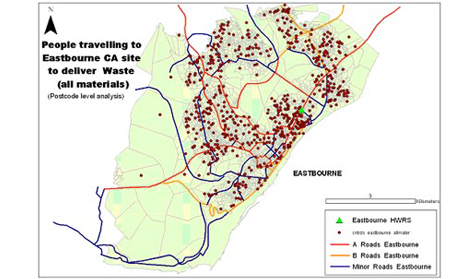- 1908
- Centre for Applied Philosophy, Politics and Ethics
- Waste and Energy Research Group
- Aggregating the Student Voice
- Aesthetics of protest: Visual culture and communication in Turkey
- Barrier Solutions
- BRIDGE (Building Research & Innovation Deals for Green Economy)
- Breathing City
- Brighton Fuse ‘Fusebox’ Knowledge Exchange Project (2014-15)
- Brighton Fuse
- brightONLINE
- Community 21
- Community Media 4 Kenya
- CETLD
- Continuous Productive Urban Landscape
- Culture, Sport and Wellbeing - What Works for Wellbeing Programme
- Digital Policy: Connectivity, Creativity and Rights - ESRC Seminar Series
- Designing for the Future
- Digital Archaeology:
- Drawing Research Interest Group (DRIG)
- Drawing as a pedagogical tool
- Drawing research
- Discovering Digital Me: Forging Links across Digital Identity, Digital Literacy and Digital Economy (2011 - 2013)
- E-ARK
- Edible Campus
- FutureCoast - FutureCoast Youth
- Flax – Increasing its Value for Society
- Graphic Brighton
- Here Today - Moving Images of Climate Change
- Healing War Through Art
- Hide
- ISEA
- The Role of Iconicity in Language Learning
- Improving Exercise Devices for Patients with Rheumatoid Arthritis
- Innovation for Renewal (IFORE)
- INTERREG IVA ProjectFlax
- Invisible Machines
- LGBT Queer Life Research Hub
- LiVi
- MacDonald Gill
- Mobility of the Line / Utility of the Line
- Networks - Subject Centre Magazine
- Networks
- National Recording Project - Sussex
- Our Dancing Feet: Regent Dancehall/Wintergarden
- Postgraduate Design History Society (PDHS)
- Placemakers Space
- Portland Sculpture and Quarry Trust: Memory Stones
- Ryerson Brighton image exchange
- Research news archive
- Silver Stories
- sKINship
- Smart e-bikes
- StoryA | STORY Abroad
- Structural Health Monitoring System (SHMS) for earthquake zones
- Tempus Esprit
- Transnational perspectives on women's art, feminism and curating
- The Centre for Screendance
- The Craft of the Woods: A New Cultural History of the British Woodcraft Movement
- The Design Education Association
- Traces of Nitrate
- Tempus CORINTHIAM
- Tempus IDEA
- Urban Transformations Pathways from Practice to Policy
- VI-Suite
- Visual Learning Project
- The People's Pier: The popular culture of pleasure piers and cultural regeneration through community heritage
Home » Projects archive » Waste and Energy Research Group » Local Authorities » HWRC User Activity
HWRC User Activity

Map of users for the Eastbourne HWRC
Despite the importance of HWRC in managing waste there are few studies which have reported on the activity of site users.
In 1999 WERG worked in partnership with East Sussex County Council to monitor site activity. Approximately 1,000 site users were surveyed over a week with auditors recording information on the composition of waste that each user was deposited. Only those site users that were depositing waste onto the main pile were monitored – not those that were segregating their waste to use the recycling facilities.
Surprisingly research showed that 40% of total users monitored deposited garden waste onto the residual waste pile – this was despite facilities being offered for segregating garden waste. A large number of users also deposited bagged household waste, timber, cardboard and waste from small scale building projects (DIY). Users were also questioned in regards to where the waste originated. Using GIS analysis it was possible to map from where users were travelling to deposit materials.
The results show that 96% of users lived within a 5 minute drive from the site. Since this research was conducted the council has implemented a range of initiatives which aim to increase levels of recycling.


